The Nordic Power Profiler Kit II (PPK2) is a tool that measures power consumption by either providing power to the external board (source meter) or acting as an ampere meter. It measures current from 500 nA to 1 A and gives a detailed picture of the current profile for the user application.
It is normally operated using the Power Profiler app which is included as part of nRF Connect for Desktop: https://www.nordicsemi.com/Products/Development-tools/nrf-connect-for-desktop.
I had posted about it a couple of years ago when I received one for evaluation - Nordic Power Profiler Kit II (PPK2).
I recently received a Torex DC/DC Converter EVB and wanted an easy way to sweep the input voltage while measuring the input current. The PPK2 can do that measurement in source meter mode, but the Power Profiler app does not have the capability of sweeping the source voltage value. I went in search of an API that would allow me to do that. It turns out that the earlier version of the Power Profiler Kit (v1) did have an API provided by Nordic, but the newer version does not. Nordic instead refers you to a third party Python API developed by IRNAS Institute - ppk2-api-python. I would have preferred something vendor supported, but decided to give it a try.
There isn't much in the way of documentation except a couple of examples at the github repo. I did manage to hack the multi-processing example to do a simple voltage sweep while measuring current. I did a quick test using a 1K ohm resistor.

The PPK2 interface is through the USB serial port. I am running in a CMD window on my Win10 PC.
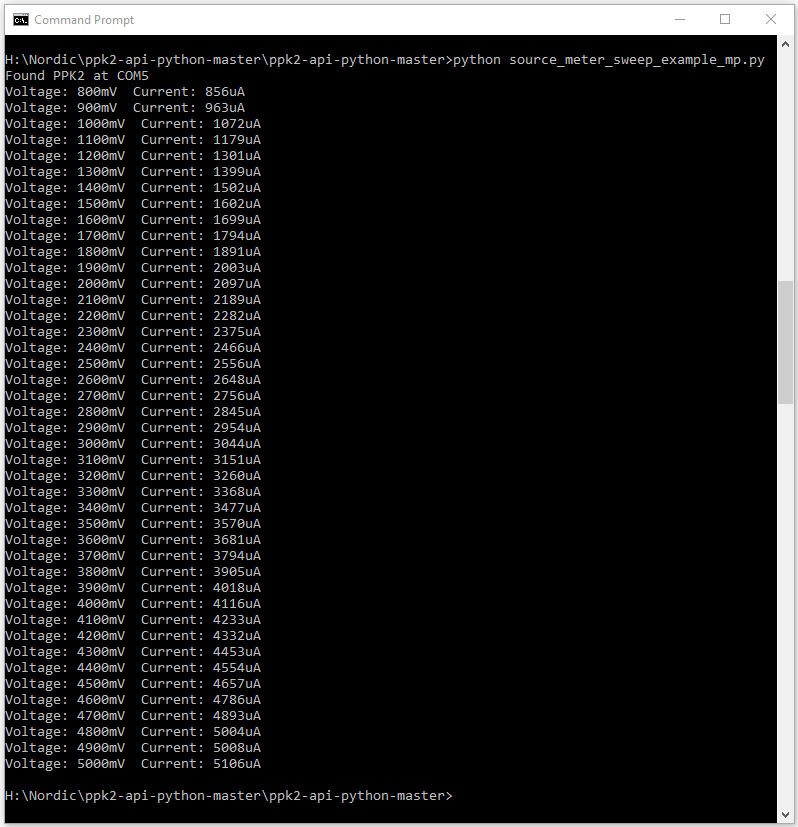
Since it's Python, I used matplotlib to plot the data.
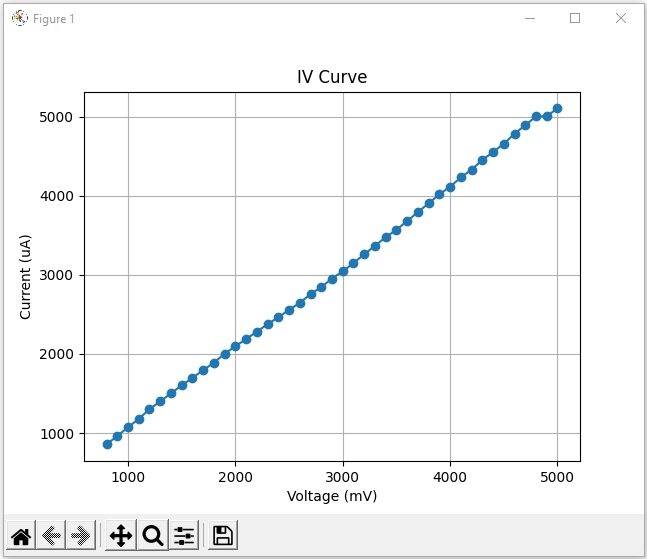
And used the csv library to save the data so that I could use it with Excel.
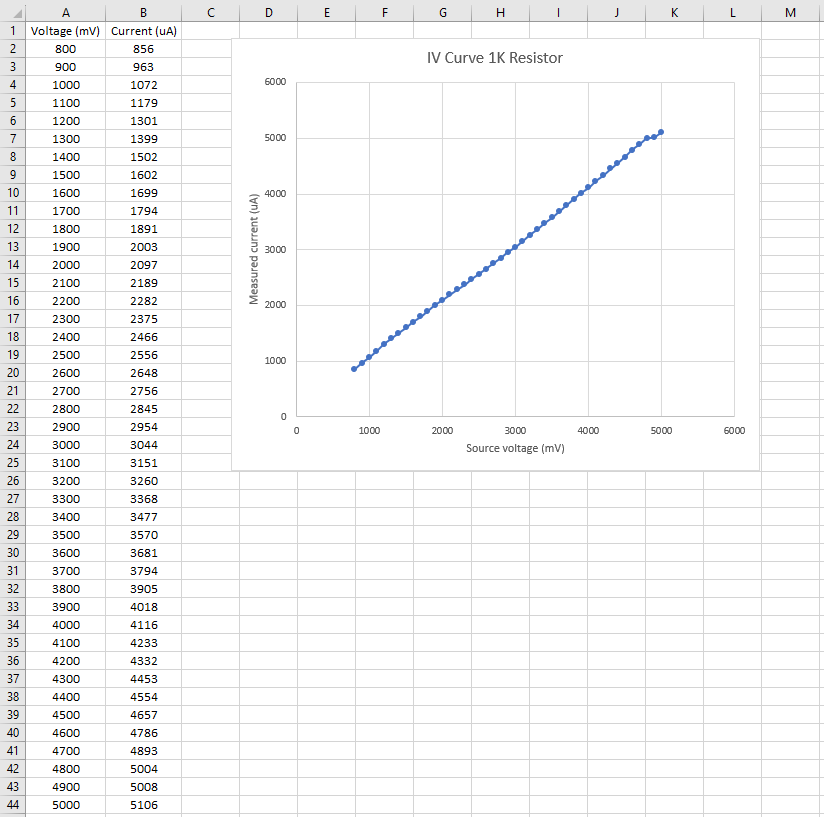
This simple test does expose some of the weaknesses of using the PPK2.
- Limited range (800mV to 5V) - it also has some problems at the ends of the range.
- Limited accuracy (+/- 10% with +/- 2% offset).
- In source meter mode part of the problem is the accuracy of the source voltage.
Here are some of the relevant specs:
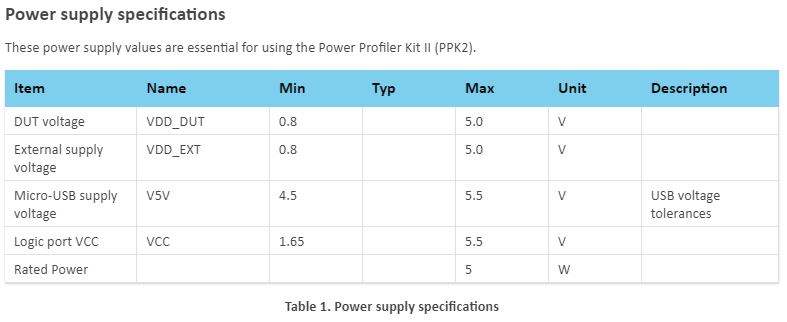
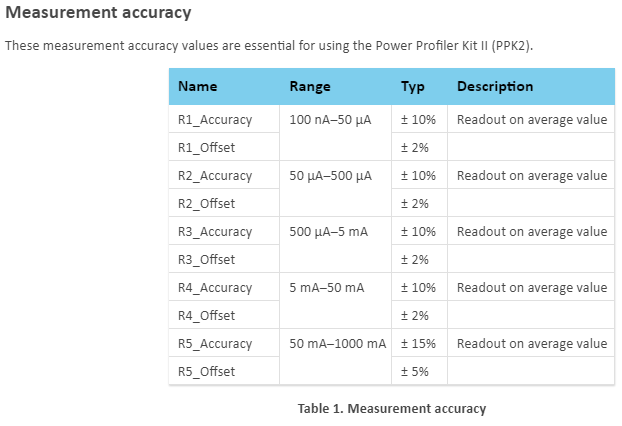

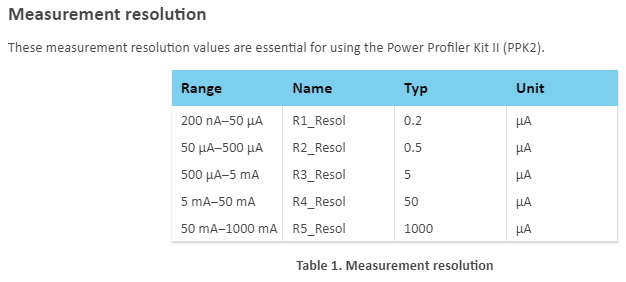
I would have liked a range down to 500mV and overall accuracy of +/- 5%, but I think that this will work for the quick evaluation I want to do. At least it might show me where I want to do more accurate tests. I like the PPK2 because it is very compact and easy to use. I'll need to figure out what other functions that I can use with this API. I read on the Nordic forum that they don't have any plans for developing their own API.
